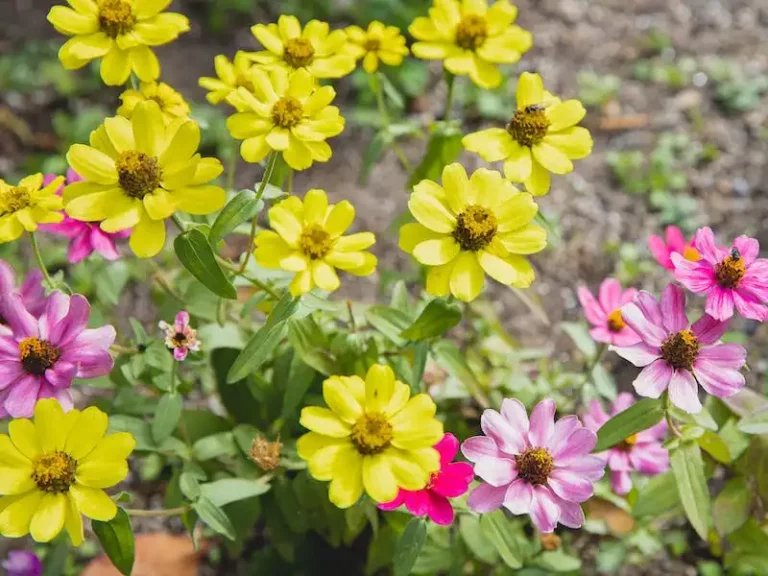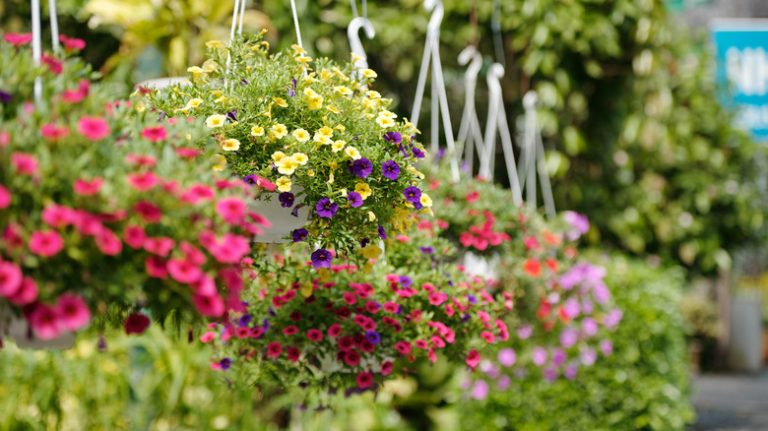Are you looking to attract butterflies to your garden? Consider planting milkweed, a native plant that plays a crucial role in the life cycle of monarch butterflies. Milkweed, also known as asclepias, can be planted in outdoor flowerbeds or in pots using well-draining soil. It is a popular choice for butterfly gardens due to its large orange or yellow flowers that provide nectar for adult butterflies.
Milkweeds are not only beautiful plants, but they also serve as hosts for monarch caterpillars. Monarchs lay their eggs exclusively on milkweed plants, and the caterpillars that emerge from these eggs feed on the leaves. Without milkweed, monarchs would not have a suitable place to lay their eggs or food for their growing caterpillars. So, by planting milkweed, you can help support the monarch population and contribute to the conservation of these beautiful butterflies.
There are several different species of milkweed that you can choose from for your garden. Some common varieties include the butterflyweed (asclepias tuberosa), the common milkweed (asclepias syriaca), and the swamp milkweed (asclepias incarnata). Each species has its own unique characteristics, such as different flower colors and plant heights. When planting milkweed, it’s important to carefully find a spot that suits the needs of the specific species you’ve chosen.
Milkweed plants are very hardy and can tolerate a wide range of soils and light conditions. However, they generally prefer full sun and well-draining soil. Once planted, milkweeds require minimal care. Water them weekly, or more often in hot and dry weather. Keep an eye out for any pests or diseases that may occur, though milkweeds are relatively resistant to these issues. Additionally, you may need to carefully remove any brown or withering leaves to keep the plants looking their best.
In addition to attracting monarch butterflies, milkweed plants can also be beneficial for other pollinators in your garden. The bright colors and sweet nectar of the flowers attract various species of bees, butterflies, and other insects. By providing a source of nectar for these pollinators, you are supporting the overall health and biodiversity of your garden.
So, if you want to add some beauty and life to your garden while supporting monarch butterflies and other pollinators, consider planting milkweed. Remember to choose a variety that is suitable for your region and provide the proper care to ensure the plants thrive. By doing so, you can create a welcoming environment for butterflies and other beneficial insects, all while adding a touch of natural beauty to your outdoor space.
Monarchs and Milkweed
Monarchs and milkweed go hand in hand. These beautiful butterflies rely on milkweed plants for their survival. The relationship between Monarchs and milkweed is a perfect example of coevolution, where two species have evolved to depend on each other.
Milkweed plants are the host plants for Monarch caterpillars. The adult female lays her eggs on the underside of milkweed leaves. When the eggs hatch, the caterpillars immediately start munching on the foliage. They’re very hungry caterpillars!
What makes milkweed plants so special? For one, they are native to North America, with more than 100 species found across the continent. Some common species include Asclepias syriaca, commonly known as common milkweed, and Asclepias incarnata, also known as swamp milkweed or butterflyweed.
Milkweed plants have an interesting relationship with Monarchs. The milky sap in their stems and leaves contains cardenolides, toxic compounds that make Monarch caterpillars unpalatable to predators. It’s these toxins that also give Monarch butterflies their bright orange and black warning colors.
When planting milkweed, it’s important to consider the needs of Monarchs. They need a steady supply of nectar throughout their lifecycle. By planting a variety of nectar-rich flowers, such as verbena and anemone, alongside milkweed, you can provide a buffet for Monarchs and other pollinators.
Monarchs also need milkweed for laying their eggs and feeding their caterpillars. In fact, milkweed is the only plant that Monarch caterpillars can eat. Without milkweed, Monarchs cannot successfully reproduce.
One of the great things about milkweed is its resilience. It can grow in a variety of soils, from dry to swampy, and in a range of sun conditions, from full sun to part shade. Some species, like Asclepias incarnata, can even tolerate flooding, making them a great choice for wet areas.
When it comes to care, milkweed plants are relatively low-maintenance. They don’t require much watering, though they can benefit from a weekly deep watering during dry spells. Fertilizing is not necessary, and in fact, can be harmful to Monarchs and other pollinators, so it’s best to avoid using any chemical products.
Milkweed plants are also great neighbors. They have deep root systems that help prevent soil erosion, and their tall stalks provide shade and shelter for other plants. Plus, they attract a wide range of pollinators, from bees to butterflies to birds.
Propagation of milkweed plants is done through seeds or by dividing existing plants. The seed pods of milkweed plants are large and often have a silky substance inside. You can collect the seeds and plant them directly in the ground, or start them indoors and then transplant them outside when they’re ready.
So, if you want to attract Monarchs to your garden, plant some milkweed! By providing a habitat for these iconic butterflies, you’re not only supporting their population but also helping to spread awareness about the importance of native plants and pollinators.
If you’re unsure where to find milkweed plants, a quick internet search or visit to a local garden center can point you in the right direction. Many nurseries and online sources offer milkweed plants and seeds, making it easy to incorporate these beautiful and beneficial plants into your landscape.
Common Milkweed Asclepias syriaca
Common Milkweed (Asclepias syriaca) is a native plant commonly found in North America. It is an important plant for both monarch butterflies and other pollinators. The plants can grow to be quite large, reaching heights of up to 6 feet.
The flowers of the common milkweed are pinkish-purple and are grouped together in large, round clusters. These flowers provide a valuable source of nectar for butterflies, bees, and other pollinators. Additionally, the leaves of the milkweed plant are an important food source for monarch caterpillars. Monarch butterflies lay their eggs on the milkweed leaves, and the caterpillars feed on the leaves as they grow.
If you would like to grow common milkweed in your garden, here are some tips to keep in mind:
- Plant the milkweed in a full sun location.
- Ensure that the soil is well-draining.
- Milkweed plants do not require much fertilizing, so it is best to avoid adding too much fertilizer.
- When planting milkweed, be careful not to damage the roots because the plants do not transplant well.
- Water the plants regularly, but be careful not to overwater.
- Common milkweed can spread quickly, so you may need to thin out the plants if they become overcrowded.
- If you have neighbors who complain about the spread of the plants, you can try planting them in containers to keep them contained.
The common milkweed plant is commonly propagated by seed. The seeds are usually planted in the fall or early spring, but they can also be started indoors and then transplanted outdoors. The seeds need a period of cold stratification, so it is best to sow them outdoors in the fall or place them in the refrigerator for a month before planting.
In addition to common milkweed, there are other species of milkweed plants that can be grown in the garden. Butterflyweed (Asclepias tuberosa) and swamp milkweed (Asclepias incarnata) are two popular choices. These plants have similar care needs and are also attractive to butterflies and other pollinators.
So, if you’re a gardener looking to attract monarch butterflies and other pollinators to your yard, planting milkweed is a great choice. Not only will you get to enjoy the beautiful flowers, but you will also be providing an important habitat for monarchs and helping to support their populations.
Butterflyweed Asclepias tuberosa
Butterflyweed, also known as Asclepias tuberosa, is a great addition to any garden. This plant is commonly used to attract butterflies, especially monarchs, to the garden. Its bright orange flowers are a favorite of these beautiful insects.
Butterflyweed can be planted both outdoors and indoors, depending on your preference and available space. If you decide to plant it in your garden, make sure to choose a sunny spot with well-draining soil. It needs full sun to grow properly and will not tolerate shady areas. Asclepias tuberosa can also tolerate partial shade, though it may not flower as much.
When planting butterflyweed, it is important to space the plants carefully. They can spread quite a bit, so give them enough room to grow without crowding each other. The plant can reach a height of around 2-3 feet, so keep that in mind when deciding where to plant it.
Butterflyweed is a low-maintenance plant, but it still requires some care. Water the plants regularly, especially during dry periods, but be careful not to overwater them. They can tolerate drought once established, but do not let the soil become bone dry. In addition to watering, you can also stake taller plants to provide support.
Propagation of Asclepias tuberosa can be done by sowing seeds directly in the garden or by starting seeds indoors. If you choose to start the seeds indoors, use a light potting mix and provide them with plenty of light. Once the seedlings are large enough, you can transplant them to the garden.
Butterflyweed plants are often complained about by gardeners because they can be invasive. However, their importance to monarch butterflies and other pollinators cannot be overstated. Milkweeds, like butterflyweed, were used by Native American settlers and played a vital role in their culture.
In Arizona, butterflyweed can be found in the wild, where it grows in dry, open areas. The plant has a long blooming period, starting in the summer months and lasting well into the fall. If you want to attract monarch butterflies to your garden, butterflyweed is a must-have plant.
In addition to being attractive to butterflies, butterflyweed also attracts other pollinators, such as bees and birds. Its bright orange flowers and nectar make it a popular choice for a variety of pollinators.
If you want to create a butterfly-friendly garden, consider planting butterflyweed along with other butterfly-attracting plants, such as verbena, catmint, and bachelor’s button. With the right planting and care, you can provide a habitat for these beautiful insects and help support their populations.




